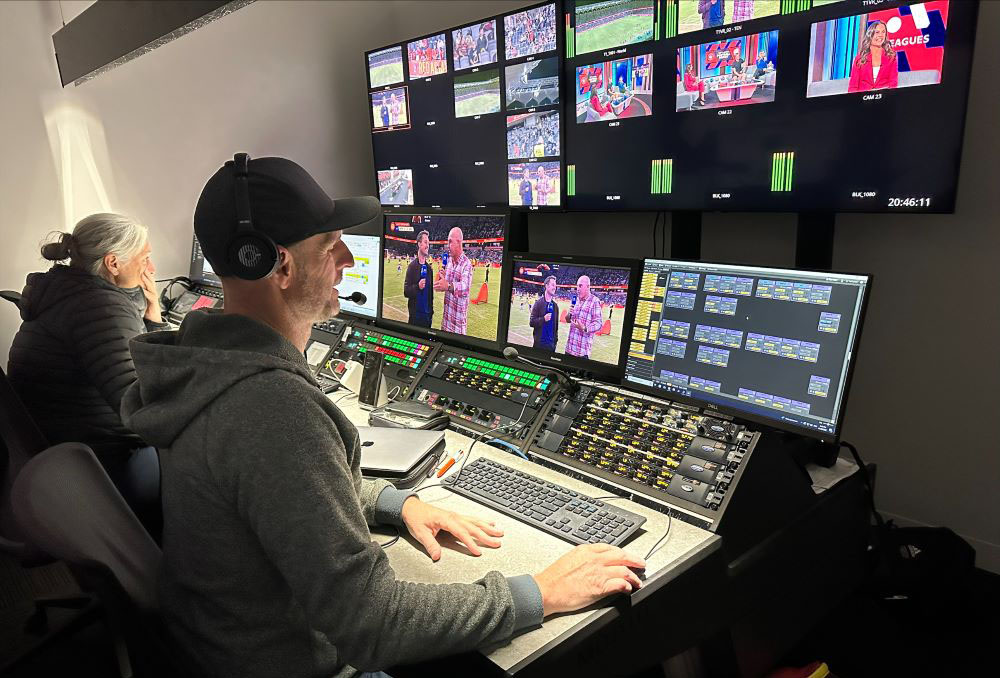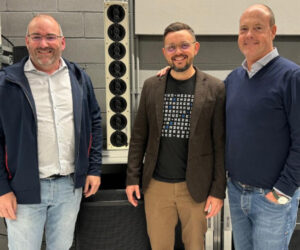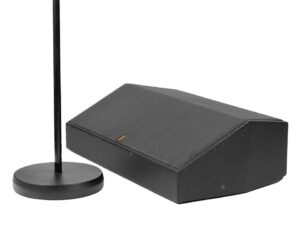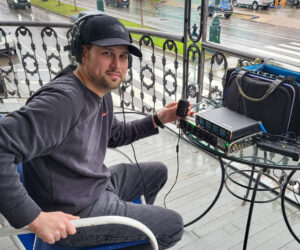Headquartered in Sydney, Australia, media production service company Global Advance has changed the way it delivers remote production via cost efficiencies and scalability, with Clear-Com technology at the heart of the approach.
Working together with system technology integrator Elevate Broadcast, a Clear-Com partner, the Global Advance team utilizes a communications system comprised of a Eclipse HX Digital matrix and a FreeSpeak II Digival wireless intercom supplemented by the Agent-IC mobile app to produce the Australian Professional League’s (APL) A-League men’s and women’s soccer programming for the Network 10 commercial television network and Paramount+ subscription VOD service.
“When we came into this project, we were looking to take the way remote production and outside broadcast was done even further,” says Dennis Breckenridge, CTO of Global Advance. “We endeavored to drive economies of scale and operational efficiencies, saving our customers significant money, and offering as good if not better levels of coverage than they were used to receiving. It really all comes down to the technology we implement and our ideology of what remote production can be by harnessing 2110 IP connectivity.”
The system was originally commissioned and produced in Singapore in 2020 during the midst of the pandemic shutdown, allowing Dennis’ team to produce the broadcast remotely from nearly 4,000 miles away. Now, while the system (and production crew) is based out of Sydney, they’re still able to accomplish quality remote production.
The backbone of the system is the Eclipse HX-Delta, a 3RU frame supporting point-to-point or one-to-many (party line or conference) communications up to 256 ports. It’s linked with LQ Series IP interfaces out to the field for moving and distributing comms signals to and from all the communication points on the network, and incorporates a Dynamic Eclipse Configuration (Dynam-EC) add-on module, which Andrew Parsons, communications manager with Global Advance, says plays a significant role.
“I use Dynam-EC extensively to actively control all the comms facilities to manage the overall system,” he says. “I was able to architect and manage the communication between all the different venues on any given weekend. It allows a single communications person located in a control room to manage up to 6 APL games in an evening, which is far more efficient than a typical comms management workflow supporting multiple locations.”
Breckenridge adds, “We look at how technology can enable us to re-invent or recreate current more traditional production processes and I see communications as one of the most important elements of a seamless production. Since we’re utilizing a 100-percent 2110 IP facility and connectivity, we chose to use a Clear-Com intercom system with 2110 in and out of our data center so we can directly integrate our comms into the architecture and dramatically reduce our equipment and personnel footprint.”
Comms are all routed and controlled from the system, distributed over IP from that data center out to the comms panels in the control rooms, then over the IP national network directly to the cameras and wireless systems in the field. It delivers a continuous flow of communication, servicing multiple games and their various production teams and media operators at multiple locations all at once. There is no need to distribute multiple systems or conversion devices in the field as all equipment directly takes the 2110 signals natively.
Using a DPN – Digital Production Network from Telstra, all the APL game content and media coming from the stadiums travels through the country-wide network over fiber straight to Global Advance’s data center, which serves as the central production hub processing the SMPTE2110 signals with remote production systems and providing network connectivity and delivery capabilities. The data center connects to various Telecast control rooms (TCR), located another 15 to 30 km away, all linked up via fiber and operating with replay control, production control, vision control, communications, commentary, studios, and audio control rooms. This type of three-prong distributed architecture (in-field, processing, and control systems) supports Global Advance with the flexibility to relocate its control rooms at any time and provide facilities nationwide, offering a more mobile and agile production infrastructure.
Finally, a Freespeak II system is designed to deliver low latency capabilities for all the wireless coverage required by the production crew and team on the field, and the Agent-IC mobile app allows remote team members to connect via their phones and still maintain rcomms with production and on-field crew.
“Being able to integrate our comms into our IP infrastructure, and for example, directly interface with our cameras straight out of our Eclipse-Delta frames has been critical to us,” Breckenridge says. “It’s removed the traditional method of building complex infrastructure in the field.” He also praises the LQ series for giving them significant flexibility to run on either public or private networks.
“The quality of the Clear-Com system speaks for itself,” he concludes. “Our setup delivers exceptional system performance and high capacity for expansion to meet our constantly changing production demands. Communication is such a core part of these types of remote applications.”




















